A Psychoanalytic Interpretation of Consciousness
Understanding consciousness is like peeling an onion; each layer reveals something deeper, more complex, and often surprising. In the realm of psychoanalysis, consciousness is not merely a state of awareness but a multifaceted construct influenced by both visible and hidden forces. This article explores the intricate relationship between psychoanalysis and consciousness, delving into theories, concepts, and their implications for understanding the human mind and behavior. By examining the interplay between the conscious and unconscious, we can gain insights into our thoughts, emotions, and actions, ultimately leading to a richer understanding of what it means to be human.
The unconscious mind plays a pivotal role in shaping our thoughts and behaviors, often acting as a silent puppeteer controlling our actions without our awareness. Imagine driving a car while your mind wanders; your unconscious is steering while you’re lost in thought. This section examines how unconscious processes influence consciousness and decision-making. For instance, repressed memories and unacknowledged desires can surface in unexpected ways, affecting our choices and interactions. Understanding these dynamics can illuminate why we react in certain ways to people or situations, often without realizing the underlying causes.
Various psychoanalytic theories offer unique perspectives on consciousness, each contributing to a deeper comprehension of the mind's complexities. Here, we explore key theorists and their contributions to understanding the conscious and unconscious mind. Sigmund Freud, the father of psychoanalysis, proposed that our psyche is structured into distinct parts, while Carl Jung introduced the idea of a collective unconscious shared across humanity. These theories not only provide frameworks for understanding individual consciousness but also highlight how cultural and societal influences shape our mental landscapes.
Freud's model of the psyche divides the mind into the id, ego, and superego, each playing a crucial role in our conscious experience. The id represents our primal instincts and desires, the ego mediates between these urges and reality, and the superego embodies our moral compass. This subheading discusses how these components interact and influence conscious experience. For example, when you feel torn between indulging in a dessert (id) and maintaining your diet (superego), it’s the ego that navigates this internal conflict, shaping your conscious choice.
The id represents basic instincts and drives, often operating on the pleasure principle, seeking immediate gratification. This section analyzes how these primal urges manifest in conscious behavior and decision-making. Have you ever found yourself craving something so intensely that it overrides your logical thinking? That’s the id at work! It’s essential to recognize how these instinctual drives can influence our daily choices and relationships, often leading to impulsive actions that we later question.
The ego, on the other hand, operates on the reality principle, mediating between the id's desires and the constraints of reality. Here, we explore how the ego's functioning affects conscious awareness and self-regulation. Think of the ego as a skilled negotiator, balancing your wants with the world’s demands. It helps us make decisions that are not only satisfying but also socially acceptable, guiding us through life’s complexities while maintaining our sense of self.
Carl Jung introduced the concept of the collective unconscious, a reservoir of shared human experiences and archetypes that influence individual consciousness. This subheading examines how shared archetypes influence individual consciousness and cultural phenomena. For instance, the hero's journey is a narrative archetype that resonates across cultures, shaping how we perceive challenges and growth in our lives. Jung believed that tapping into this collective unconscious could enhance our self-awareness and understanding of our place in the world.
Dreams serve as a window into the unconscious mind, offering insights that can illuminate our waking lives. This section discusses how analyzing dreams can reveal hidden aspects of consciousness and personal conflicts. Have you ever woken up from a dream feeling a strong emotion, only to wonder what it meant? Dreams often act as a bridge to our unconscious, providing clues about unresolved issues or desires. By embracing dream analysis, we can unlock a treasure trove of understanding about ourselves.
Dreams often contain symbolic meanings, acting as a language of the unconscious. Here, we explore how interpreting these symbols can enhance our understanding of conscious thoughts and feelings. For example, dreaming of flying might symbolize a desire for freedom or escape, while being chased could represent anxiety or avoidance. By decoding these symbols, we can gain valuable insights into our emotional states and motivations.
Various techniques exist for dream analysis, offering tools to uncover insights about consciousness through dreams. This subheading outlines methods used in psychoanalysis to interpret dreams, such as free association, where the dreamer speaks freely about the dream’s content, or exploring personal associations with the dream symbols. These techniques can help individuals connect their dreams to their waking lives, fostering deeper self-awareness and healing.
Understanding consciousness is crucial in psychoanalysis, particularly concerning mental disorders. This section explores how disturbances in consciousness relate to psychological issues. Conditions such as anxiety, depression, and PTSD can disrupt our conscious experience, often leading to a fragmented sense of self. Recognizing these disturbances allows for more effective therapeutic interventions, helping individuals reclaim their conscious awareness and navigate their mental health challenges.
Defense mechanisms protect the ego from anxiety, often operating at both conscious and unconscious levels. This subheading discusses how these mechanisms impact mental health. For example, denial might prevent someone from acknowledging a painful truth, while projection could lead them to attribute their own feelings to others. Understanding these mechanisms can be empowering, offering pathways to confront and resolve underlying issues.
Transference and countertransference are key concepts in psychoanalysis, shaping conscious experiences within the therapeutic relationship. Transference occurs when a patient projects feelings about significant others onto the therapist, while countertransference is the therapist's emotional response to the patient. Exploring these dynamics can enhance the therapeutic process, fostering healing and deeper understanding of one's consciousness.
- What is the unconscious mind? The unconscious mind contains thoughts, memories, and desires that are not currently in conscious awareness but influence behavior.
- How do dreams relate to consciousness? Dreams provide insights into our unconscious thoughts and feelings, often revealing hidden conflicts.
- What are defense mechanisms? Defense mechanisms are psychological strategies used to cope with anxiety and protect the ego from distress.

The Role of the Unconscious
The unconscious mind is like the hidden iceberg beneath the surface of the ocean—vast, mysterious, and profoundly influential. It shapes our thoughts, emotions, and behaviors in ways we often don't even realize. Imagine driving a car while your mind is preoccupied with a million things; it's the unconscious that keeps the vehicle on track while your conscious mind flits from one thought to another. This section dives deep into the fascinating ways the unconscious affects our conscious decisions and interactions.
One of the most compelling aspects of the unconscious is its ability to store repressed memories and unresolved conflicts. These hidden elements can surface in unexpected ways, influencing our behavior and decision-making without our conscious awareness. For example, a person who experienced trauma in childhood might find themselves reacting with intense fear or anger in situations that remind them of that past experience, even if they don't consciously remember the event. This phenomenon underscores the importance of understanding the unconscious in the realm of psychoanalysis.
Moreover, the unconscious mind is not merely a repository of forgotten memories; it actively shapes our perceptions and interpretations of reality. Have you ever had a gut feeling about a situation? That instinct often stems from unconscious processes that analyze past experiences and outcomes, guiding your conscious thoughts. For instance, when faced with a decision, your unconscious might weigh the pros and cons based on previous similar experiences, even if you aren't actively thinking about them. This interplay highlights the intricate relationship between the unconscious and conscious mind.
To better understand the unconscious's role, let's consider some key functions it serves:
- Influencing Behavior: The unconscious can drive behaviors that align with hidden desires or fears.
- Shaping Identity: Our unconscious beliefs and memories contribute significantly to our sense of self.
- Guiding Decision-Making: Often, our best decisions come from an intuitive understanding rooted in unconscious processing.
In psychoanalysis, tapping into the unconscious is crucial for uncovering the deeper layers of the psyche. Techniques such as free association, where individuals speak freely to reveal their thoughts, can help bring unconscious content to light. By understanding these hidden influences, we can gain a clearer picture of our motivations and behaviors, leading to personal growth and healing.
In conclusion, the unconscious mind is a powerful force that significantly impacts our conscious lives. By exploring its depths, we can unlock a greater understanding of ourselves, paving the way for more informed choices and healthier relationships. The journey into the unconscious is not just about understanding the past; it's about empowering ourselves to navigate the present and future with clarity and intention.
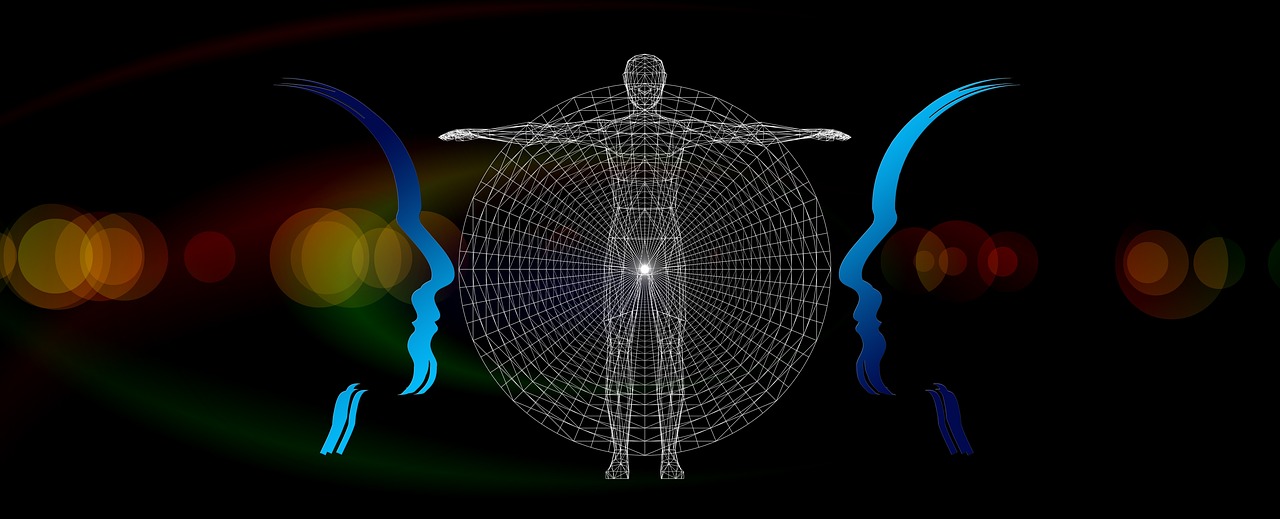
Psychoanalytic Theories of Consciousness
The exploration of consciousness through the lens of psychoanalysis unveils a fascinating tapestry of theories that seek to explain the complex interplay between our conscious and unconscious minds. These theories, developed by pioneering thinkers, offer diverse perspectives on how we perceive ourselves and the world around us. From Freud's structural model to Jung's concept of the collective unconscious, each theory enriches our understanding of human behavior and thought processes.
At the heart of psychoanalytic thought is the recognition that much of our mental activity occurs outside of our conscious awareness. This unseen realm, often referred to as the unconscious, is believed to hold repressed memories, desires, and fears that can influence our conscious thoughts and actions. The implications of this idea are profound: if our unconscious harbors such powerful materials, then understanding its workings could unlock the mysteries of our behavior and emotional responses.
One of the most significant contributions to psychoanalytic theory comes from Sigmund Freud, who proposed that the mind is structured in three parts: the id, ego, and superego. Each of these components plays a crucial role in shaping our conscious experience. The id, representing our primal instincts and desires, often conflicts with the more rational ego, which strives to mediate between these desires and the realities of the external world. Meanwhile, the superego serves as our moral compass, guiding our actions based on societal norms and values. This dynamic interplay can lead to internal conflicts that manifest in our conscious thoughts and behaviors.
Another influential figure in psychoanalytic theory is Carl Jung, who expanded upon Freud's ideas by introducing the concept of the collective unconscious. Jung posited that beyond our personal unconscious lies a shared reservoir of experiences and archetypes common to all humanity. These archetypes, such as the Hero or the Mother, shape our perceptions and influence our dreams and conscious thoughts. By tapping into this collective unconscious, individuals can gain insights into their personal struggles and the cultural narratives that shape their identities.
In summary, the psychoanalytic theories of consciousness reveal a rich landscape of ideas that help us navigate the complexities of the human mind. Understanding these theories not only enhances our self-awareness but also provides valuable tools for therapeutic practices aimed at addressing psychological issues. As we delve deeper into these concepts, we begin to appreciate the profound impact of both the conscious and unconscious on our daily lives.
- What is the unconscious mind? The unconscious mind is the part of our mental processes that occurs without our awareness, influencing thoughts, emotions, and behaviors.
- How do Freud's theories differ from Jung's? Freud focused on individual psyche and instinctual drives, while Jung emphasized the collective unconscious and shared archetypes across humanity.
- Why are dreams important in psychoanalysis? Dreams provide a window into the unconscious, revealing hidden desires and conflicts that can be explored for therapeutic insights.
- What role do defense mechanisms play in consciousness? Defense mechanisms protect the ego from anxiety by distorting reality, often operating at both conscious and unconscious levels.

Freud's Structural Model
Sigmund Freud, the father of psychoanalysis, introduced a groundbreaking framework to understand the human psyche through his Structural Model. This model divides the mind into three distinct yet interrelated components: the id, the ego, and the superego. Each of these elements plays a crucial role in shaping our thoughts, behaviors, and conscious experiences. Imagine these components as players in a complex game, where each has its own agenda and influence on how we navigate life.
The id is the primal part of our psyche, representing our most basic instincts and desires. It operates on the pleasure principle, seeking immediate gratification without considering consequences. Picture a toddler throwing a tantrum for a cookie; that's the id in action! It’s raw, impulsive, and often disregards societal norms. This is where our deepest, often unconscious urges reside, driving us to fulfill our most fundamental needs.
In contrast, the ego acts as the mediator, balancing the desires of the id with the realities of the external world. It operates on the reality principle, understanding that not all desires can be instantly satisfied. Think of the ego as a wise adult guiding the impulsive child (the id). It evaluates situations, weighs options, and helps us make decisions that are socially acceptable. Without the ego, we would be slaves to our impulses, leading to chaotic and potentially harmful behaviors.
The third component, the superego, embodies our moral compass, incorporating the values and norms we internalize from society, parents, and culture. It strives for perfection and judges our actions, often imposing feelings of guilt when we stray from its ideals. Imagine it as a strict teacher who keeps us in line, reminding us of what’s right and wrong. The interplay between these three components creates a dynamic tension within our minds, influencing our conscious thoughts and behaviors.
To illustrate how these components interact, consider the following table:
| Component | Function | Example |
|---|---|---|
| Id | Seeks immediate pleasure and gratification | Desiring to eat cake without considering health |
| Ego | Mediates desires with reality | Choosing to have a small piece of cake after dinner |
| Superego | Imposes moral standards and ideals | Feeling guilty for indulging in too much cake |
This structural model is not just a theoretical framework; it has practical implications for understanding human behavior. For instance, when we face a moral dilemma, the tug-of-war between the id, ego, and superego becomes evident. The id might scream for indulgence, the superego might chastise us for even considering it, and the ego will attempt to find a reasonable compromise. This internal conflict can manifest in various ways, influencing our conscious choices and leading to feelings of anxiety or guilt.
In summary, Freud's Structural Model offers profound insights into the complexities of human consciousness. By understanding the roles of the id, ego, and superego, we can better comprehend our motivations and behaviors. It reminds us that our conscious experiences are often the result of an ongoing negotiation between our primal urges, our sense of reality, and our moral standards. This understanding not only enriches our self-awareness but also enhances our interactions with others, as we recognize that everyone is navigating their own internal struggles.
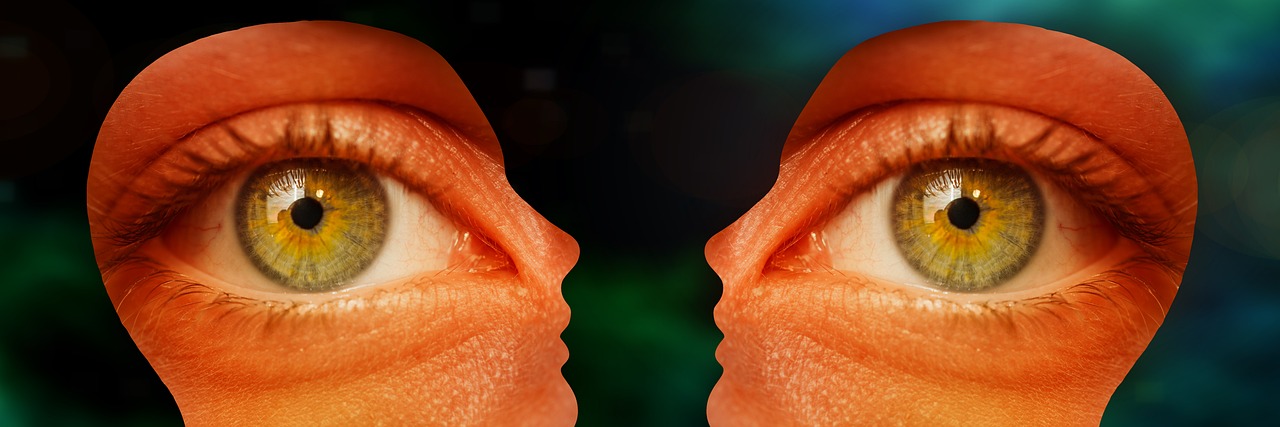
Id and Primitive Drives
The id is often described as the most primal part of our psyche, a reservoir of unconscious desires and instincts that drive our behavior. Imagine it as a wild beast within us, roaring for attention, seeking immediate gratification without any regard for reality or social norms. This part of the mind is entirely focused on what it wants in the moment, be it food, pleasure, or even aggression. The id operates on the pleasure principle, which means it aims to satisfy its needs as quickly as possible. Think of a child throwing a tantrum when they don't get their way; that's the id in action!
Primitive drives are the basic instincts that the id embodies. These can be categorized into several key areas:
- Sexual Drives: Often referred to as the libido, these drives encompass our sexual desires and urges, which are fundamental to human existence and reproduction.
- Aggressive Drives: These instincts may manifest as anger or hostility, pushing individuals to assert themselves or defend their territory.
- Survival Instincts: Basic needs such as hunger and thirst fall under this category, driving individuals to seek nourishment and sustenance.
These primitive drives are not inherently negative; they are essential for survival and motivation. However, when left unchecked, they can lead to behaviors that are socially unacceptable or even destructive. For instance, someone might experience intense cravings (a manifestation of the id) that lead them to engage in binge eating or substance abuse. The id does not consider the consequences of its actions, which can create a conflict between our innate desires and societal expectations.
Additionally, the id's influence can be seen in various aspects of daily life. For example, think about how we react when we see a delicious dessert. The immediate urge to indulge is a direct reflection of the id's power. It’s only through the mediation of the ego, which recognizes reality and societal rules, that we can control these urges and make more rational decisions. This interplay between the id and ego is crucial for maintaining a balance between our primal instincts and the demands of reality.
In summary, the id represents the raw, unfiltered part of our psyche that drives us to seek pleasure and avoid pain. Understanding this aspect of our consciousness is vital, as it lays the groundwork for how we navigate our desires and interact with the world around us.
- What is the id in psychoanalysis? The id is the part of the mind that contains our primal instincts and desires. It operates on the pleasure principle, seeking immediate gratification.
- How do primitive drives affect behavior? Primitive drives can lead to impulsive actions if not mediated by the ego, resulting in behaviors that may conflict with societal norms.
- Can the id be controlled? Yes, the ego plays a crucial role in managing the id's impulses by considering reality and social rules.

Ego and Reality Principle
The ego serves as the rational component of our psyche, acting as a mediator between the primal desires of the id and the moral constraints of the superego. It is crucial in navigating the complexities of reality, ensuring that our actions are not just a reflection of our immediate urges but also take into account the social and environmental context. Imagine the ego as a skilled negotiator, balancing the wild demands of the id with the stern regulations imposed by the superego. This balancing act is essential for maintaining mental health and facilitating effective decision-making.
At the heart of the ego's functioning is the reality principle. This principle dictates that the ego must operate based on the realities of the external world rather than merely satisfying instinctual desires. For instance, while the id might scream for instant gratification—like devouring an entire cake—the ego understands that such behavior could lead to social embarrassment or health issues. Thus, the ego intervenes, suggesting a more moderate approach: perhaps enjoying a slice instead. This is where the ego showcases its role in self-regulation, helping us to delay gratification and make choices that are socially acceptable and beneficial in the long run.
The reality principle is not just about delaying gratification; it also involves realistic planning and problem-solving. The ego assesses situations, weighs possible outcomes, and devises strategies that align with both our desires and societal norms. This process can be likened to a ship's captain navigating through turbulent waters, constantly adjusting the sails to keep the vessel on course while avoiding potential hazards. Without this navigational skill, one may find themselves adrift, acting impulsively without regard for consequences.
Furthermore, the ego's ability to adapt to reality is vital for personal development. As we grow, we encounter various challenges that require us to adjust our expectations and behaviors. The ego learns from these experiences, creating a more nuanced understanding of the world. This adaptability is essential for building resilience, allowing individuals to face setbacks with a constructive mindset.
However, the ego is not infallible. It can become overwhelmed by the demands placed upon it, leading to anxiety and conflict between the id and superego. When this occurs, individuals may resort to defense mechanisms as coping strategies. These mechanisms, such as repression, denial, or rationalization, serve to protect the ego from the discomfort of internal conflicts but can also distort reality if overused. For example, someone who consistently denies their feelings of sadness may find it increasingly challenging to engage with others authentically.
In summary, the ego's role in the reality principle is a fundamental aspect of psychoanalytic theory. It not only helps us navigate our desires and societal expectations but also fosters personal growth and resilience. Understanding this dynamic can offer profound insights into our behavior and mental health, illuminating the intricate dance between our conscious and unconscious minds.
- What is the main function of the ego in psychoanalysis? The ego mediates between the id's primal desires and the superego's moral constraints, allowing for rational decision-making based on the reality principle.
- How does the reality principle affect our daily decisions? The reality principle encourages us to consider the consequences of our actions and to delay immediate gratification for more socially acceptable or beneficial outcomes.
- What are defense mechanisms, and how do they relate to the ego? Defense mechanisms are psychological strategies the ego employs to cope with anxiety and conflict, often distorting reality to protect itself from discomfort.
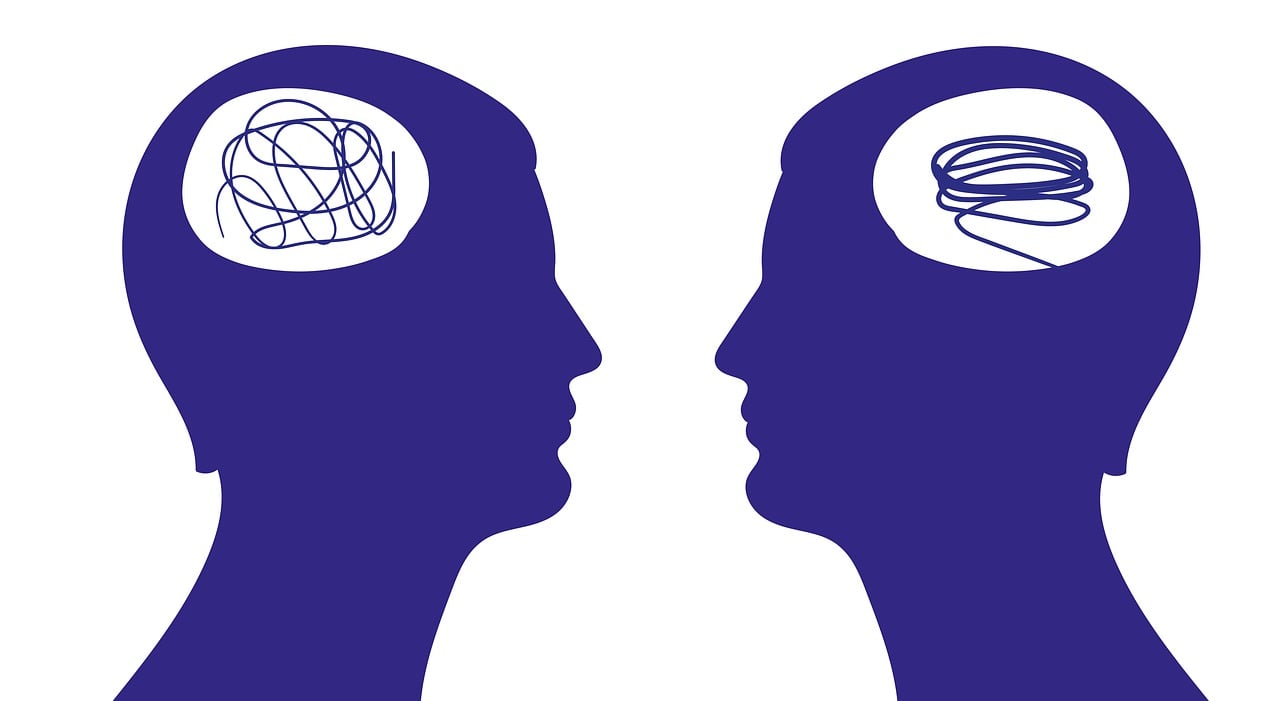
Jung's Collective Unconscious
The concept of the collective unconscious introduced by Carl Jung is one of the most fascinating and profound ideas in psychoanalysis. Unlike the personal unconscious, which is shaped by individual experiences, the collective unconscious comprises the shared memories and archetypes that transcend individual lives and cultures. Imagine it as a vast reservoir of human experience, a deep ocean filled with the thoughts, feelings, and symbols that connect us all as a species. This shared mental space influences our behaviors, dreams, and even our fears, often without us even realizing it.
At the heart of Jung's theory is the idea of archetypes. These are universal symbols or themes that recur across different cultures and epochs. Think of archetypes as the building blocks of our shared human experience. For example, the archetype of the Hero appears in countless myths and stories, representing the journey of overcoming obstacles and achieving greatness. Similarly, the Mother archetype embodies nurturing and care, influencing how we perceive maternal figures in our lives. These archetypes not only shape our individual consciousness but also play a significant role in cultural phenomena.
Jung believed that archetypes manifest in various ways, such as through art, religion, mythology, and even dreams. When we dream, we often tap into this collective reservoir, bringing forth symbols that resonate on a deeper level. For instance, dreaming of a wise old man might symbolize the archetype of the Sage, representing wisdom and guidance. By interpreting these symbols, we can gain insights into our own consciousness and the collective experiences that bind humanity together.
Moreover, the collective unconscious can be seen as a bridge between the individual psyche and the larger world. It suggests that our thoughts and feelings are not entirely our own but are influenced by a broader tapestry of human experience. This connection can be both liberating and daunting. On one hand, it can provide a sense of belonging and understanding that we are part of something greater. On the other hand, it can also highlight the weight of collective fears and traumas that may linger in our subconscious.
In practical terms, Jung's collective unconscious has significant implications for therapy and personal development. By exploring these shared symbols and archetypes, individuals can better understand their motivations and behaviors. Therapists can guide clients in recognizing how these universal themes influence their personal narratives, leading to greater self-awareness and healing. This process often involves active imagination, a technique where individuals engage with their unconscious through creative expression, allowing them to tap into the collective unconscious and uncover deeper insights.
In summary, Jung's concept of the collective unconscious enriches our understanding of consciousness by emphasizing our shared human experience. It invites us to explore the archetypes that shape our lives and to recognize the interconnectedness of our individual journeys. By doing so, we can uncover the profound layers of meaning that lie beneath our conscious thoughts, ultimately leading to a more integrated and holistic understanding of ourselves and the world around us.
- What is the collective unconscious? The collective unconscious is a term coined by Carl Jung to describe the part of the unconscious mind that is shared among all humans, containing universal memories and archetypes.
- How do archetypes influence our lives? Archetypes are universal symbols that shape our perceptions, behaviors, and experiences, often appearing in dreams, myths, and cultural narratives.
- Can understanding the collective unconscious help in therapy? Yes, exploring the collective unconscious can provide insights into personal motivations and behaviors, aiding in self-awareness and healing during therapy.

The Impact of Dreams
Dreams have long captivated the human imagination, often seen as a mystical portal to the unconscious mind. They are not just random images or stories that play out while we sleep; rather, they serve as a window into our deepest thoughts, fears, and desires. Have you ever woken up from a dream that felt so real, it left you questioning the boundaries between reality and imagination? This experience is not uncommon, and it highlights the profound impact that dreams can have on our understanding of consciousness.
In the realm of psychoanalysis, dreams are considered vital for revealing hidden aspects of our psyche. Sigmund Freud famously stated that "dreams are the royal road to the unconscious." They can unveil personal conflicts and unresolved issues, providing insight into our emotional states. For instance, a recurring dream about falling might indicate feelings of insecurity or anxiety in waking life. By analyzing these dreams, we can uncover patterns and themes that reflect our conscious thoughts and feelings.
Moreover, dreams often employ symbolism to convey complex ideas. A dream about flying might symbolize a desire for freedom or escape, while a dream featuring water could represent emotions or the subconscious mind itself. Understanding these symbols can enhance our self-awareness and provide clarity about our waking experiences. It’s as if our subconscious is speaking to us in a language we must learn to interpret.
To dive deeper into the significance of dreams, psychoanalysts employ various techniques for dream analysis. These methods can range from free association, where the dreamer verbalizes their thoughts and feelings about the dream, to more structured approaches that focus on specific symbols and themes. Here’s a brief overview of some popular techniques:
| Technique | Description |
|---|---|
| Free Association | The dreamer expresses thoughts that come to mind when recalling the dream, allowing for spontaneous connections to emerge. |
| Symbol Analysis | Examining the symbols within the dream to uncover their meanings and how they relate to the dreamer's life. |
| Contextual Interpretation | Considering the dream within the context of the dreamer's current life situation and emotional state. |
Each of these techniques offers unique insights and can lead to a richer understanding of one's consciousness. As we explore our dreams, we may find that they reflect not only our personal struggles but also universal themes that resonate across cultures. This shared aspect of dreaming can foster a sense of connection to others, reminding us that while our experiences may be unique, the underlying human emotions are often similar.
In conclusion, the impact of dreams on our consciousness is profound and multifaceted. They serve as a bridge between our waking and sleeping selves, offering valuable insights into our thoughts and emotions. By engaging in dream analysis, we can unlock the secrets of our unconscious mind, leading to greater self-awareness and personal growth. So, the next time you drift off to sleep, remember that your dreams might be trying to tell you something important—are you ready to listen?
- What do recurring dreams mean? Recurring dreams often signify unresolved issues or persistent anxieties in waking life that need to be addressed.
- Can dreams predict the future? While some people believe dreams can offer glimpses into the future, most psychologists view them as reflections of our current thoughts and feelings.
- How can I improve my dream recall? Keeping a dream journal by your bedside and writing down your dreams as soon as you wake up can enhance your ability to remember them.

Symbolism in Dreams
When we drift into the realm of dreams, we enter a world where the ordinary rules of reality seem to dissolve. Dreams are not just random images or fleeting thoughts; they are rich tapestries woven from the threads of our subconscious, filled with profound symbolism that can unlock hidden truths about ourselves. Have you ever woken up from a dream and felt a lingering sense of wonder or confusion? That’s the magic of dream symbolism at play.
Every element in a dream—be it a person, object, or even a color—can carry significant meaning. For instance, dreaming of water often symbolizes emotions, while flying might represent a desire for freedom or escape. These symbols are not universal; they can vary greatly from person to person based on their experiences, culture, and emotions. This is why understanding the context of your own life is crucial when interpreting your dreams.
Moreover, the interpretation of these symbols can be deeply personal. For example, if someone dreams of a snake, it might evoke feelings of fear for one person, while for another, it could symbolize transformation and healing. This duality highlights the importance of looking beyond the surface to understand the underlying messages our dreams convey.
To further illustrate the concept of dream symbolism, consider the following table that outlines common dream symbols and their potential meanings:
| Dream Symbol | Possible Interpretation |
|---|---|
| Water | Emotions, subconscious feelings |
| Flying | Freedom, escape from limitations |
| Snakes | Transformation, fear, or healing |
| Falling | Loss of control, insecurity |
| Being Chased | Stress, anxiety, avoidance |
Understanding these symbols can provide insight into our waking lives. When we analyze our dreams, we can uncover unresolved issues, fears, and desires that we might not be aware of in our conscious state. This process of interpretation can be a powerful tool for personal growth and self-discovery.
So, the next time you find yourself pondering a dream, take a moment to reflect on the symbols present. What do they mean to you? How do they relate to your current life circumstances? By engaging in this reflective practice, you can begin to unravel the complex layers of your consciousness and gain a deeper understanding of yourself.
- What is the significance of dream symbolism? Dream symbolism allows individuals to explore their subconscious mind, revealing hidden emotions and thoughts.
- Can dream symbols have different meanings for different people? Absolutely! The interpretation of dream symbols is highly personal and can vary based on individual experiences and cultural backgrounds.
- How can I start analyzing my dreams? Begin by keeping a dream journal. Write down your dreams as soon as you wake up, noting any symbols and your feelings associated with them.
- Are there common symbols that appear in many people's dreams? Yes, some symbols like water, flying, and being chased are common across different cultures, but their meanings can differ based on personal context.

Dream Analysis Techniques
When it comes to understanding the intricate tapestry of our minds, dream analysis techniques stand out as powerful tools. These methods allow us to delve into the depths of the unconscious, revealing hidden emotions and unresolved conflicts that shape our waking lives. Have you ever woken up from a dream feeling perplexed, yet oddly enlightened? That's the magic of dreams—they often serve as a bridge between our conscious thoughts and unconscious desires.
One of the most prominent techniques in dream analysis is the free association method. This technique encourages individuals to express whatever comes to mind when they think about their dreams. By doing so, they can uncover connections between dream elements and their waking life experiences. For instance, a dream about flying might lead someone to explore feelings of freedom or escape from responsibilities. This method emphasizes the importance of personal interpretation; after all, who knows your mind better than you?
Another widely used technique is symbolic interpretation. Dreams are often rich with symbols that hold personal significance. For example, dreaming of water might symbolize emotions, while a house could represent the self. By analyzing these symbols, individuals can gain insights into their emotional states and psychological struggles. A skilled analyst may help guide this process, but ultimately, the dreamer’s perspective is crucial in deciphering these symbols.
In addition to these methods, Jungian dream analysis introduces the concept of archetypes—universal symbols that resonate across cultures. Jung believed that by recognizing these archetypes in dreams, individuals could tap into the collective unconscious, gaining a deeper understanding of their own psyche. For instance, encountering a wise old man in a dream might signify the dreamer’s quest for knowledge or guidance. This technique not only enriches personal insight but also connects individuals to a broader human experience.
Furthermore, dream journaling is a practical technique that many find beneficial. Keeping a dream journal involves writing down dreams immediately upon waking, capturing details that might otherwise fade away. This practice not only enhances dream recall but also allows for patterns to emerge over time. By reviewing past entries, individuals can identify recurring themes and symbols, providing a clearer picture of their emotional landscape.
Lastly, guided imagery can be a powerful technique for those looking to explore their dreams further. This method involves visualizing dream scenarios while awake, allowing individuals to interact with the dream content in a conscious state. This can lead to new insights and resolutions. Imagine walking through the dream landscape, confronting fears or embracing desires in a safe and controlled environment. It’s like stepping into a movie where you are both the actor and the director.
In conclusion, dream analysis techniques offer a fascinating glimpse into the workings of our minds. Whether through free association, symbolic interpretation, or guided imagery, these methods empower individuals to explore their inner worlds. As you reflect on your own dreams, consider which techniques resonate with you. After all, the journey into your unconscious can be as enlightening as it is transformative.
- What is the purpose of dream analysis? Dream analysis aims to uncover hidden emotions and conflicts in the unconscious mind, providing insights into our waking lives.
- How can I start analyzing my dreams? Start by keeping a dream journal to record your dreams upon waking. Reflect on symbols and themes that appear in your dreams.
- Do I need a therapist to analyze my dreams? While a therapist can provide guidance, you can also explore your dreams independently using various techniques.
- What if I can't remember my dreams? Improving dream recall takes practice. Try setting an intention before sleep and keep a journal by your bedside to jot down any fragments upon waking.
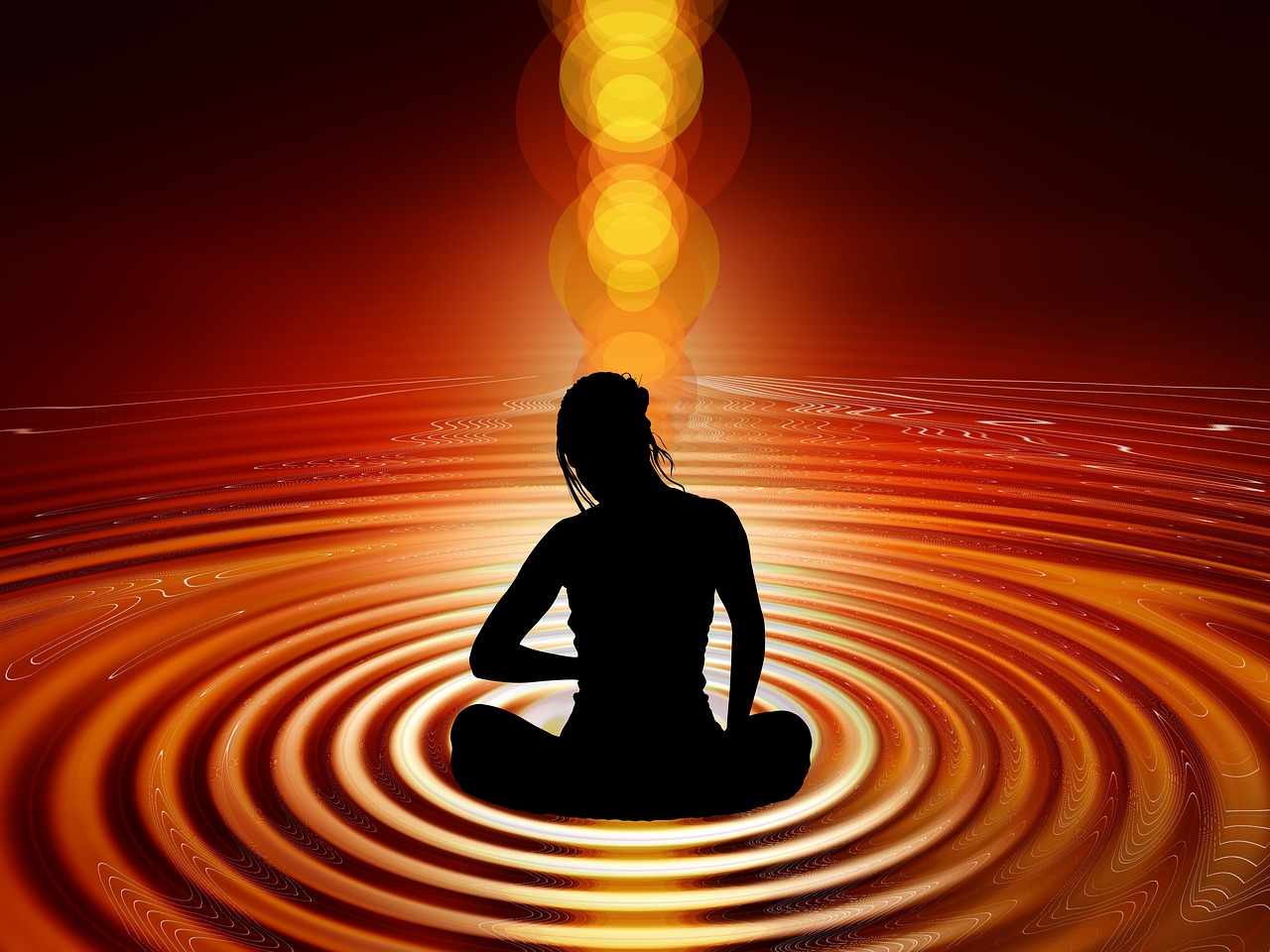
Consciousness and Psychopathology
Understanding consciousness is crucial in the realm of psychoanalysis, especially when it comes to unraveling the complexities of mental disorders. The intricate relationship between consciousness and psychopathology reveals how disturbances in conscious awareness can significantly impact an individual’s mental health. Think of consciousness as a vast ocean, where the surface represents our conscious thoughts, feelings, and perceptions, while the depths harbor the unconscious drives, fears, and unresolved conflicts that often dictate our behavior.
When we delve into psychopathology, we find that many mental health issues stem from disruptions in this delicate balance of consciousness. For instance, conditions such as anxiety disorders, depression, and schizophrenia can be viewed through the lens of consciousness disturbances. These conditions often manifest as a disconnection from reality, overwhelming emotions, or an inability to process experiences adequately. This is where psychoanalytic theories become invaluable, providing insight into how unconscious processes can lead to conscious symptoms.
One of the key concepts in understanding this relationship is the role of defense mechanisms. These are unconscious strategies employed by the ego to protect itself from anxiety and distressing thoughts. Common defense mechanisms include:
- Repression: Pushing distressing memories or thoughts out of conscious awareness.
- Projection: Attributing one’s own unacceptable feelings to others.
- Displacement: Redirecting emotions from a threatening target to a safer one.
These mechanisms operate at both conscious and unconscious levels, and while they can provide temporary relief from anxiety, they can also lead to further complications if left unchecked. For example, an individual who represses traumatic memories may experience symptoms of depression or anxiety, indicating that their conscious mind is struggling to cope with unresolved issues lurking beneath the surface.
The concepts of transference and countertransference also play pivotal roles in the therapeutic relationship, shedding light on how consciousness is shaped within this context. Transference occurs when a patient projects feelings and attitudes from past relationships onto their therapist, while countertransference refers to the therapist's emotional responses to the patient. Both phenomena can significantly influence the conscious experience of the individual, offering a unique opportunity for exploration and understanding in therapy.
In summary, the interplay between consciousness and psychopathology is a fascinating area of study that reveals how our unconscious mind can influence our conscious thoughts and behaviors. By understanding these dynamics, we can better address mental health issues and facilitate healing through psychoanalytic techniques. Ultimately, consciousness serves as the bridge between our internal struggles and our outward behavior, making it a crucial component in the journey towards mental wellness.
- What is the significance of consciousness in psychoanalysis?
Consciousness is vital in psychoanalysis as it helps in understanding how unconscious processes influence thoughts and behaviors, particularly in relation to mental disorders. - How do defense mechanisms affect mental health?
Defense mechanisms can protect the ego from anxiety but may also lead to complications if they prevent individuals from confronting and processing their emotions. - What roles do transference and countertransference play in therapy?
Transference allows patients to project feelings from past relationships onto therapists, while countertransference involves therapists' emotional responses, both of which can enhance therapeutic understanding.

Defense Mechanisms
Defense mechanisms are fascinating psychological strategies that individuals unconsciously employ to protect themselves from anxiety and emotional pain. Imagine your mind as a fortress; the ego is the gatekeeper, constantly assessing threats and deciding which emotions or thoughts to let in and which to keep out. These mechanisms operate like shields, helping to maintain a sense of psychological equilibrium when faced with stress or trauma. They can be seen as the mind's way of coping with reality, often distorting or denying the truth to create a more manageable internal environment.
One of the most intriguing aspects of defense mechanisms is their dual nature. On one hand, they can provide immediate relief from discomfort, allowing individuals to function in their daily lives despite underlying issues. On the other hand, reliance on these mechanisms can lead to maladaptive behaviors and hinder personal growth. For instance, consider repression, a common defense mechanism where unpleasant thoughts or memories are pushed out of conscious awareness. While this may offer temporary relief, it can also result in unresolved issues that manifest in more serious psychological problems later on.
There are several types of defense mechanisms, each serving its unique purpose. Here are a few key examples:
- Denial: Refusing to acknowledge the reality of a situation, such as a person who continues to smoke despite health warnings.
- Projection: Attributing one’s own unacceptable thoughts or feelings to someone else, like accusing a partner of being unfaithful when one has doubts about their own fidelity.
- Rationalization: Creating logical excuses for behaviors that are actually driven by emotional factors, such as justifying cheating on a test by claiming that everyone else does it.
- Displacement: Redirecting emotions from a threatening target to a safer one, like taking out frustration from work on a family member at home.
Understanding these mechanisms is crucial in the field of psychoanalysis, as they provide insight into how individuals navigate their inner worlds. They often surface in therapy sessions, revealing underlying conflicts and helping therapists guide their clients toward greater self-awareness. For example, when a patient exhibits transference, projecting feelings about one person onto the therapist, it can serve as a window into unresolved issues from the past. Recognizing these patterns allows for deeper exploration of the conscious and unconscious mind, ultimately leading to healing and self-discovery.
In summary, defense mechanisms are essential components of our psychological makeup. They serve to protect our ego from anxiety and distress but can also lead to maladaptive behaviors if overused. By identifying and understanding these mechanisms, individuals can gain valuable insights into their behaviors and emotions, paving the way for personal growth and emotional well-being.
- What are defense mechanisms? Defense mechanisms are unconscious strategies used by the ego to protect against anxiety and emotional pain.
- How do defense mechanisms affect mental health? While they can provide temporary relief, over-reliance on defense mechanisms can lead to unresolved issues and maladaptive behaviors.
- Can defense mechanisms be changed? Yes, through therapy and self-awareness, individuals can learn to recognize and modify their defense mechanisms for healthier coping strategies.
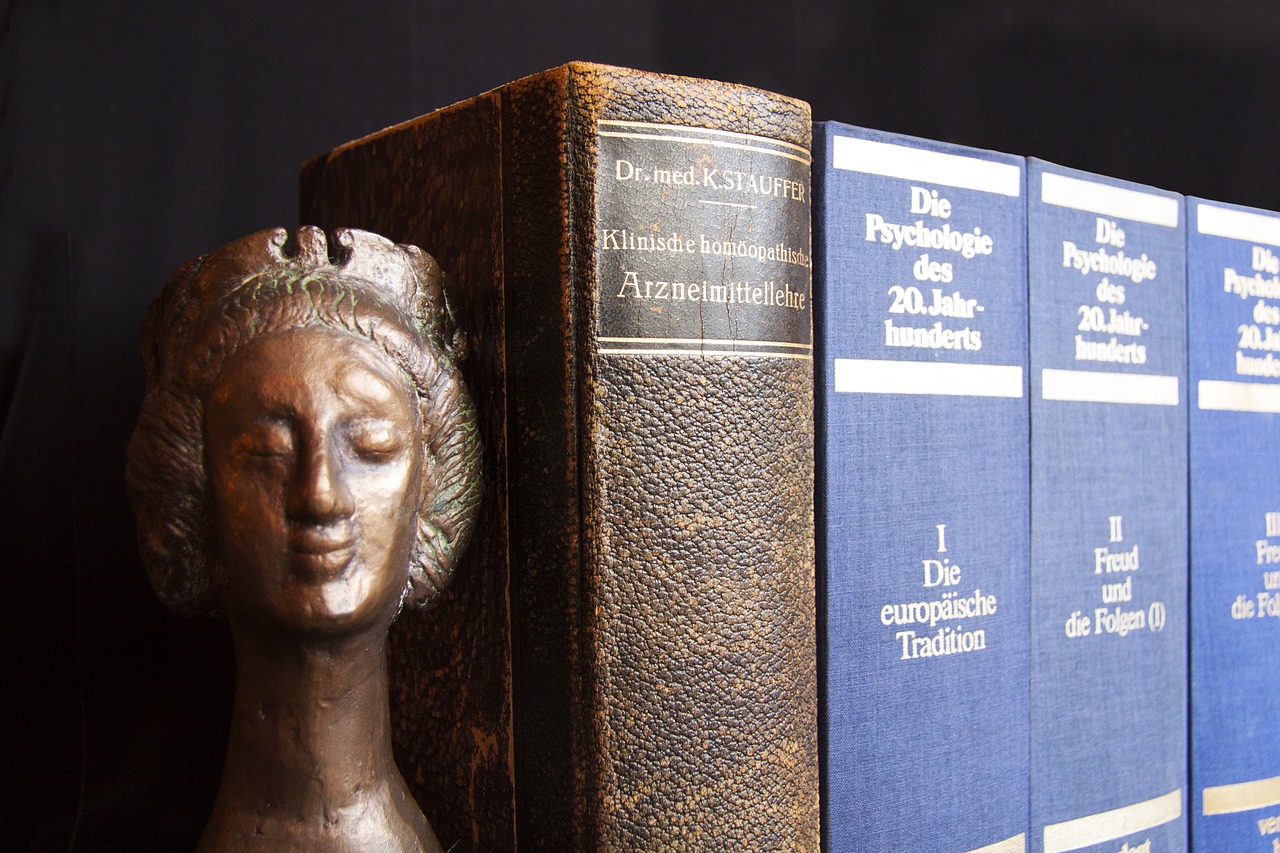
Transference and Countertransference
In the world of psychoanalysis, the concepts of transference and countertransference are pivotal for understanding the dynamics of the therapeutic relationship. But what exactly do these terms mean? Simply put, transference occurs when a patient unconsciously redirects feelings and emotions from past relationships onto their therapist. This can manifest as love, anger, or even frustration, depending on the patient's history. For instance, a patient may see their therapist as a parental figure, projecting unresolved issues from their childhood onto the therapeutic setting.
On the other hand, countertransference refers to the therapist's emotional responses to the patient. These reactions can be influenced by the therapist's own past experiences and unresolved conflicts. Imagine a therapist who, upon hearing a patient's story about neglect, feels a surge of anger or sadness from their own childhood. This emotional response can significantly impact the therapeutic process, either positively or negatively. Understanding these dynamics is essential for both the therapist and the patient, as they can reveal deeper insights into the patient’s psyche.
To illustrate the interplay between transference and countertransference, consider the following table:
| Aspect | Transference | Countertransference |
|---|---|---|
| Definition | Redirection of feelings from past relationships onto the therapist | Therapist's emotional reactions to the patient |
| Origin | Patient's unconscious mind | Therapist's personal history |
| Impact on Therapy | Can reveal unresolved conflicts | Can enhance or hinder therapeutic progress |
Recognizing these phenomena is crucial for effective therapy. For instance, when a therapist becomes aware of their own countertransference, they can take steps to manage their emotional responses, ensuring that the focus remains on the patient. This awareness helps create a safe space for the patient to explore their feelings without the therapist's biases clouding the therapeutic process.
Moreover, transference can provide valuable insights into the patient's relational patterns. By examining these projections, both the therapist and the patient can uncover underlying issues that may be affecting the patient's life outside of therapy. This process often leads to profound revelations and a deeper understanding of oneself.
In summary, transference and countertransference are not merely psychological jargon; they are essential tools in the psychoanalytic toolkit. By navigating these complex emotional landscapes, therapists can foster a more productive and enlightening therapeutic experience. So, the next time you find yourself in a therapy session, remember that the feelings you experience may not just be about the present moment but could be echoes of your past. Embracing this understanding can ultimately lead to healing and growth.
- What is transference? Transference is the process where a patient projects feelings from past relationships onto their therapist.
- What is countertransference? Countertransference refers to the therapist's emotional reactions to the patient, influenced by their own experiences.
- Why are these concepts important in therapy? They help to uncover deeper psychological issues and enhance the therapeutic process.
- Can transference be positive? Yes, positive transference can foster a strong therapeutic alliance, facilitating healing.
Frequently Asked Questions
- What is the role of the unconscious in shaping our thoughts and behaviors?
The unconscious mind is like an iceberg, with most of its mass hidden beneath the surface. It influences our thoughts, feelings, and behaviors in ways we often don't realize. For instance, unconscious desires can lead to spontaneous actions or decisions that may seem irrational at first glance. Understanding these hidden influences can help us gain deeper insights into our motivations and behaviors.
- How do Freud's structural model components interact with consciousness?
Freud's structural model divides the psyche into the id, ego, and superego. Imagine these as three characters in a play: the id is the wild child seeking pleasure, the superego is the strict parent enforcing rules, and the ego is the mediator trying to balance their needs. This dynamic interplay shapes our conscious experiences and decision-making processes, often leading to internal conflicts that we navigate daily.
- What is Jung's concept of the collective unconscious?
Carl Jung's idea of the collective unconscious suggests that we all share a reservoir of memories and archetypes inherited from our ancestors. Think of it as a communal library of human experiences and symbols that shape our individual consciousness. This shared unconscious can influence cultural phenomena and personal identities, connecting us on a deeper psychological level.
- How can dreams reveal hidden aspects of our consciousness?
Dreams act as a bridge to the unconscious, often revealing our deepest fears, desires, and conflicts. They are like a movie playing out our inner struggles, complete with symbolism that can unlock profound insights. By analyzing our dreams, we can uncover hidden thoughts and feelings that may be affecting our conscious lives, leading to greater self-awareness and personal growth.
- What are defense mechanisms, and how do they impact our mental health?
Defense mechanisms are psychological strategies that help us cope with anxiety and protect our ego. They operate both consciously and unconsciously, often distorting reality to maintain emotional balance. While these mechanisms can provide temporary relief, over-reliance on them can lead to maladaptive behaviors and hinder our ability to confront underlying issues, ultimately affecting our mental health.
- What is transference and countertransference in psychoanalysis?
Transference occurs when a patient projects feelings from past relationships onto their therapist, while countertransference is the therapist's emotional reaction to the patient. Picture it like a dance where both partners influence each other's movements. Understanding these dynamics is crucial in therapy, as they can shape the therapeutic relationship and provide valuable insights into the patient's conscious and unconscious experiences.



















